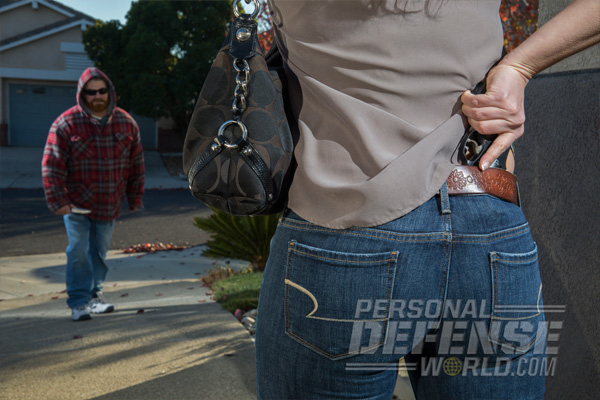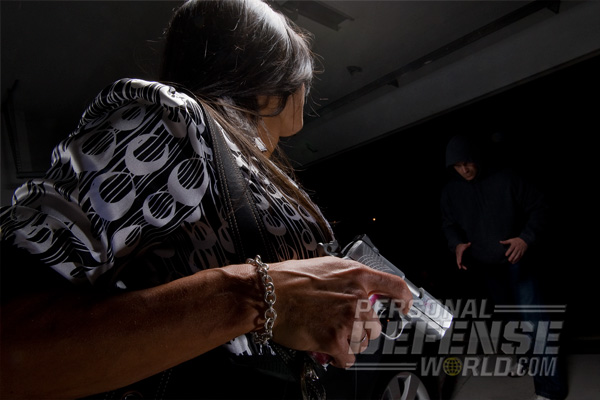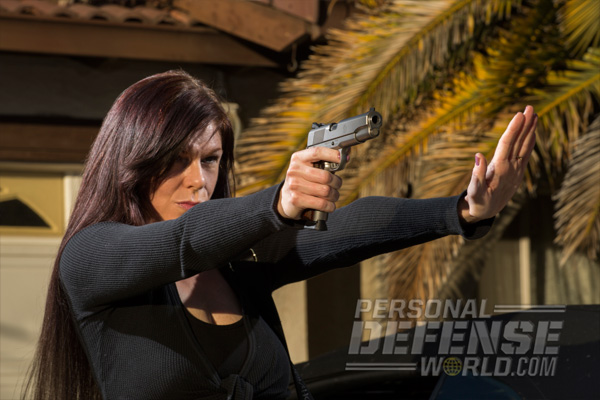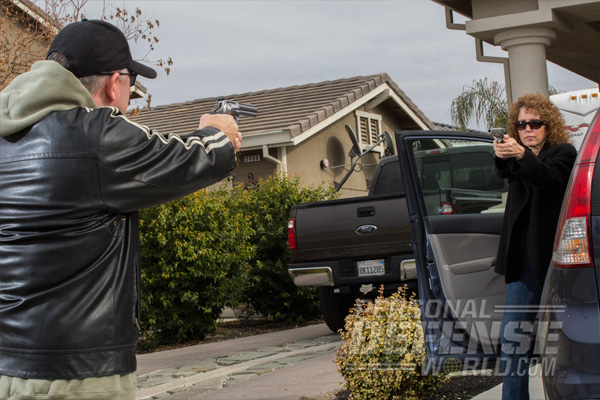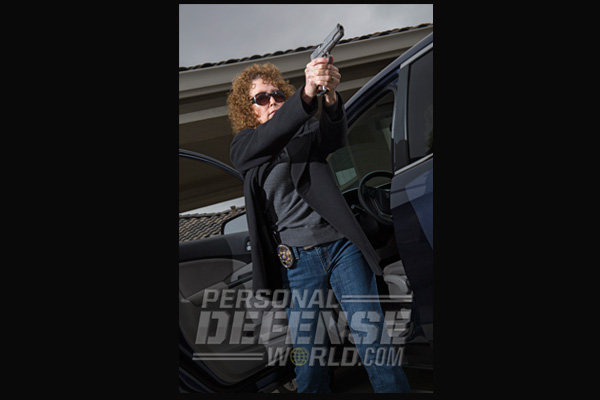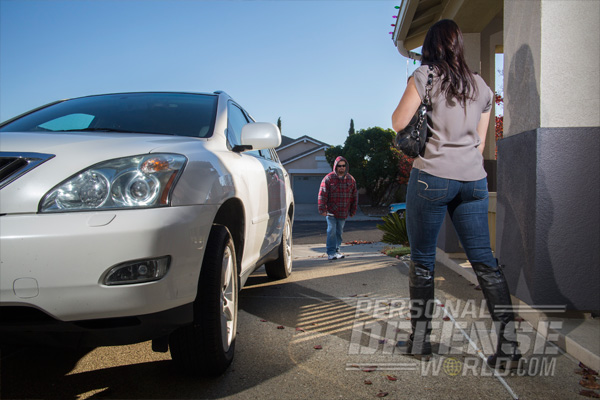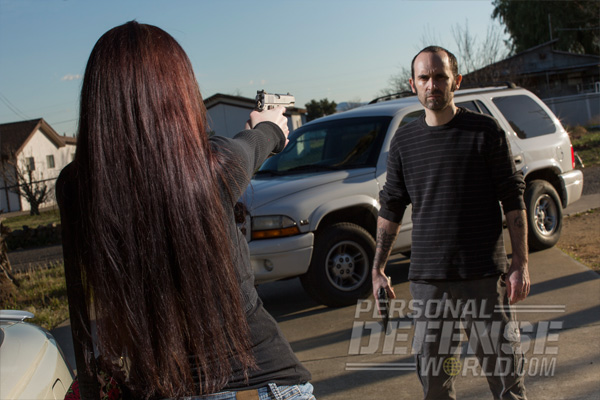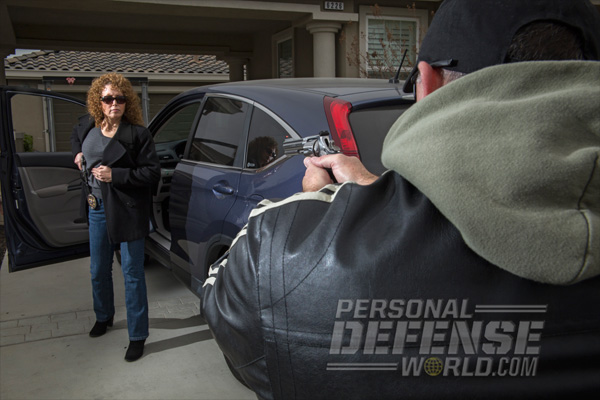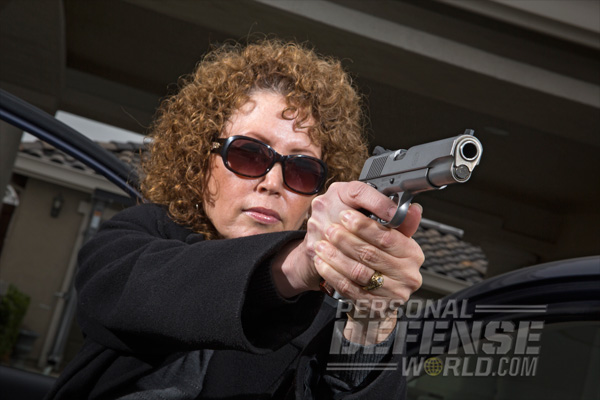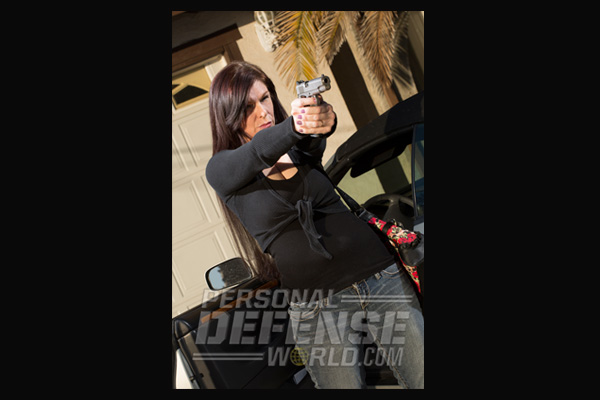A common question in concealed carry and self-defense classes is, “Don’t I have to give the bad guy a warning before I shoot?” The answer is, not necessarily. The courts analyze cases “within the totality of the circumstances.” The great U.S. Supreme Court Justice Oliver Wendell Holmes, who used deadly force in combat himself during the Civil War, famously wrote: “Detached reflection is not demanded in the presence of an upraised knife.” He used those words when writing the Court’s opinion in the case of Brown v. United States in 1921. Let’s consider that Case One for purposes of this discussion.
“I am aware of no jurisdiction requiring the good guy to give a warning before shooting the bad guy, if the bad guy is actively trying to kill them or is obviously about to do so.”
“I am aware of no jurisdiction requiring the good guy to give a warning before shooting the bad guy, if the bad guy is actively trying to kill them or is obviously about to do so.”
“Move And You’re Dead!”
Case Two was all over the news a few years ago. A Pasadena, Texas, man named Joe Horn was painted by the national media as a vigilante when his 911 call was broadcast all over the country. He was watching two men burgle the house of his absent next-door neighbors, and he told the dispatcher he was going to grab his shotgun and interdict them. The dispatcher strongly urged him not to. The man ignored the dispatcher’s advice and went outside with his Winchester 12-gauge pump gun to confront the two burglars. What happened next was caught on the phone line he had left open. He shouted, “Move and you’re dead!” Moments later, three shotgun blasts were heard. Horn’s double-ought Magnum buckshot had killed both of the criminals.
Advertisement — Continue Reading Below
Many commentators on that incident only heard, “You’re dead!” and the three gunshots. Cries of “vigilante gun nut” arose, and many people were shocked and outraged when the grand jury assessing the case returned “no true bill,” in effect saying that the man had committed no crime. What the national media didn’t mention throughout the case was that the testimony the grand jury heard included that of a plainclothes police officer in an unmarked car who had witnessed the shooting. The two men had come at the citizen violently, one wielding a blunt instrument, when the man fired the three controversial shots. There are many take-away lessons from this incident, including the fact that the man with the shotgun later stated that he wished he had never gone outside and gotten involved. But for the purposes of this discussion, one of the lessons to draw from the case is that there might be better things to say than “Move and you’re dead!”
Talk Or Take Action?
In Case Three, a women almost died because she gave a command to an armed robber when he was pointing a .357 Magnum at her. Off duty, returning home from work, she pulled into her driveway not realizing she was being followed by a carload of dangerous young punks intending to carjack her and steal her vehicle. As she stepped out of the car, she was confronted by the lead perpetrator, who was pointing the .357 at her. In response, she came up with her own department-issue Beretta 92 9mm handgun and identified herself as a law enforcement officer. The punk promptly shot her in the chest, the powerful bullet inflicting a wound path that went through her spleen and her heart, leaving an exit hole one of her surgeons described as being the size of a golf ball. She told me later, after lecturing to one of my classes, that it felt like a hot javelin running through her chest and driving her backward.
Advertisement — Continue Reading Below
She responded by shooting her attempted murderer four times, with all of her 115-grain jacketed hollow points striking centermass. He fell down and died of his wounds. His accomplices fled. Masterful surgery saved her life—Stacy Lim, an officer in the LAPD, is the only person I know of who ever survived a .357 Magnum gunshot wound to the heart. In a matter of months, Stacy had returned to full duty, later to become a role-model instructor in officer survival. One of the lessons she learned that night, and taught from then on, is that there is a time to talk and a time to simply shoot.
CLICK HERE to read Lethal Force Realities by Massad Ayoob!
Reaction Realities
I am aware of no jurisdiction in the United States where the law actually requires the good guy to give a warning before shooting the bad guy, if the bad guy is actively trying to kill them or another innocent person or is obviously about to do so. Forty or so years ago, I was researching a story on the NYPD Stakeout Squad and interviewing the acting commander of the unit, Sergeant Joe Volpato. Joe was a good man and a wise cop, and also very much “by the book.” With us in his office was Stakeout Squad member Jim Cirillo, who wound up becoming a lifelong friend of mine. Jim had been in more shootings than any other member of that high-risk felony squad except his partner, Bill Allard. Volpato was making the point that the unit’s protocol was to always, whenever possible, issue a command to the armed suspect the team members were confronting: “Police! Drop your weapons!” Unfortunately, he continued, many of the gunmen would turn on the officers and fight, forcing the cops to shoot them. The discussion turned to why they would do something that fatally stupid. “I think it’s because it’s drowned out in the sound of our gunfire,” Cirillo commented with his trademark dry sense of humor.
Advertisement — Continue Reading Below
Turning red, Sergeant Volpato stood from behind his desk, pointed his finger at Jim and rather loudly ordered him out of his office. It seems funny now. In retrospect, history shows that in most of their many fatal gunfights with armed criminals, the Stakeout Squad did issue what was called “the challenge”—“Police! Drop your weapons!” But there were also some incidents where they simply could not. In one such instance, Case Four, Allard and Cirillo encountered a pair of heavily armed criminals who appeared to be about to shoot a robbery victim. The two cops simply opened fire. One, a very large man, was mortally wounded by their first shots and fell on top of his accomplice, who was trying to bring a semi-automatic rifle to bear on the officers. They had to keep shooting—and they did. Allard for one emptied three guns: his issued Ithaca five-shot 12 gauge, his standard Smith & Wesson Model 10 .38 Special revolver, and the eight-shot National Match .45 automatic that he had special permission to carry. Only when he reloaded the last of his three guns did he realize the rifleman was now hors de combat. A reconstruction showed that the entire high-volume gunfight had happened in no more than eight seconds. Cirillo and Allard believed when the shooting started that the second man was armed with a .30-caliber M1 Carbine, whose bullets could have pierced the body armor the officers were wearing. The gun turned out to be a .22-caliber ERMA styled to look like a .30-caliber M1. Like every shooting in the Stakeout Squad’s history, this situation was thoroughly investigated and determined to be a justifiable.
Blink Of An Eye
Tense criminals holding guns in their hands, with their fingers on the triggers, can turn and fire in literally the blink of an eye. Do a Google search for the excellent peer-reviewed research that has been done on this issue by Dr. Bill Lewinski at the Force Science Institute. This research has been used in many, many court cases to successfully explain to juries why the good guys fired when they did, instead of waiting or talking. The problem is, these things are not widely understood until they come out at trial. Sadly, by that time, the public tends to have already become convinced that you shot the bad guy “without giving him a chance.” The answer to that in the real world is often, “Without giving my assailant a chance to kill me, as he obviously intended to do?”
Advertisement — Continue Reading Below
